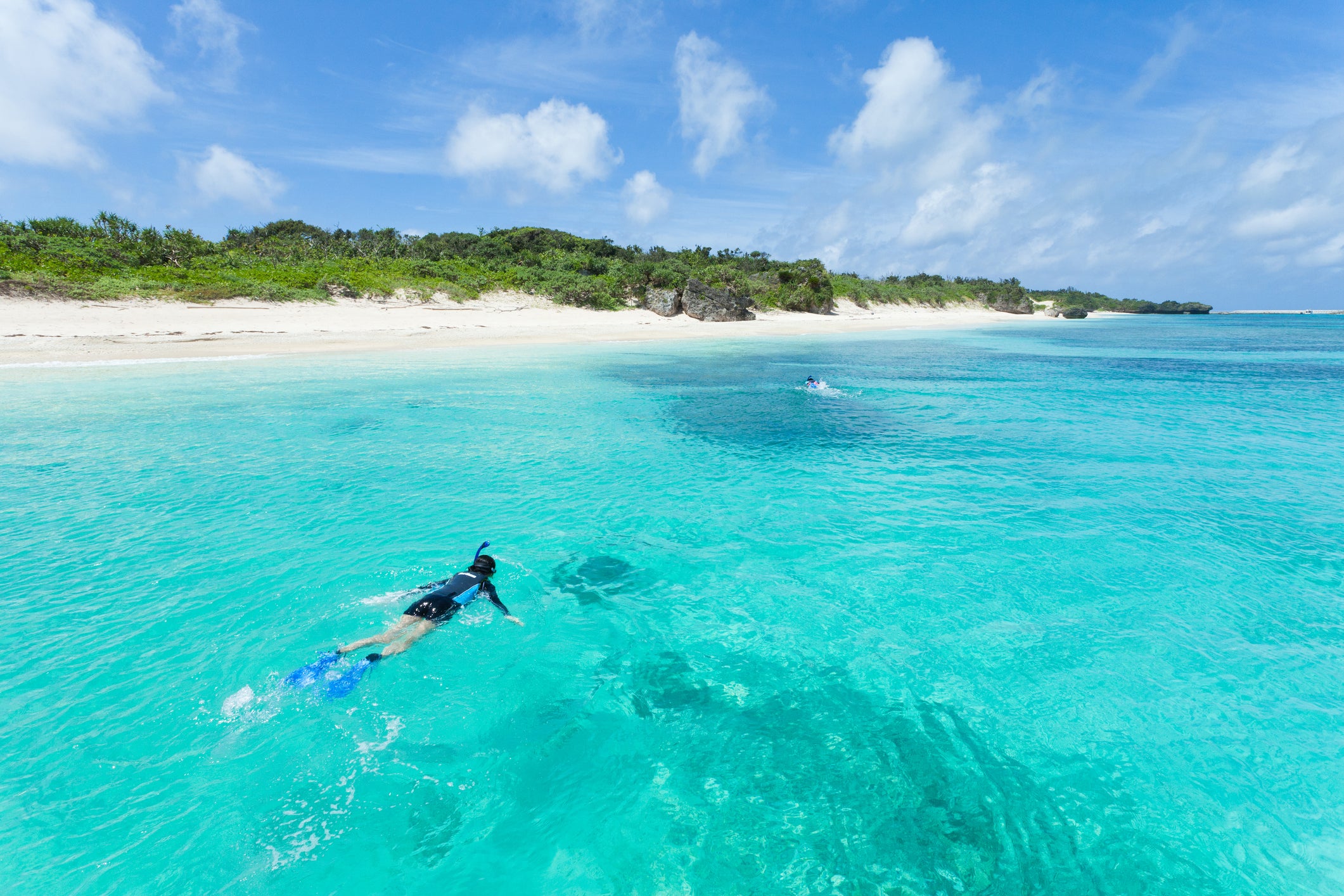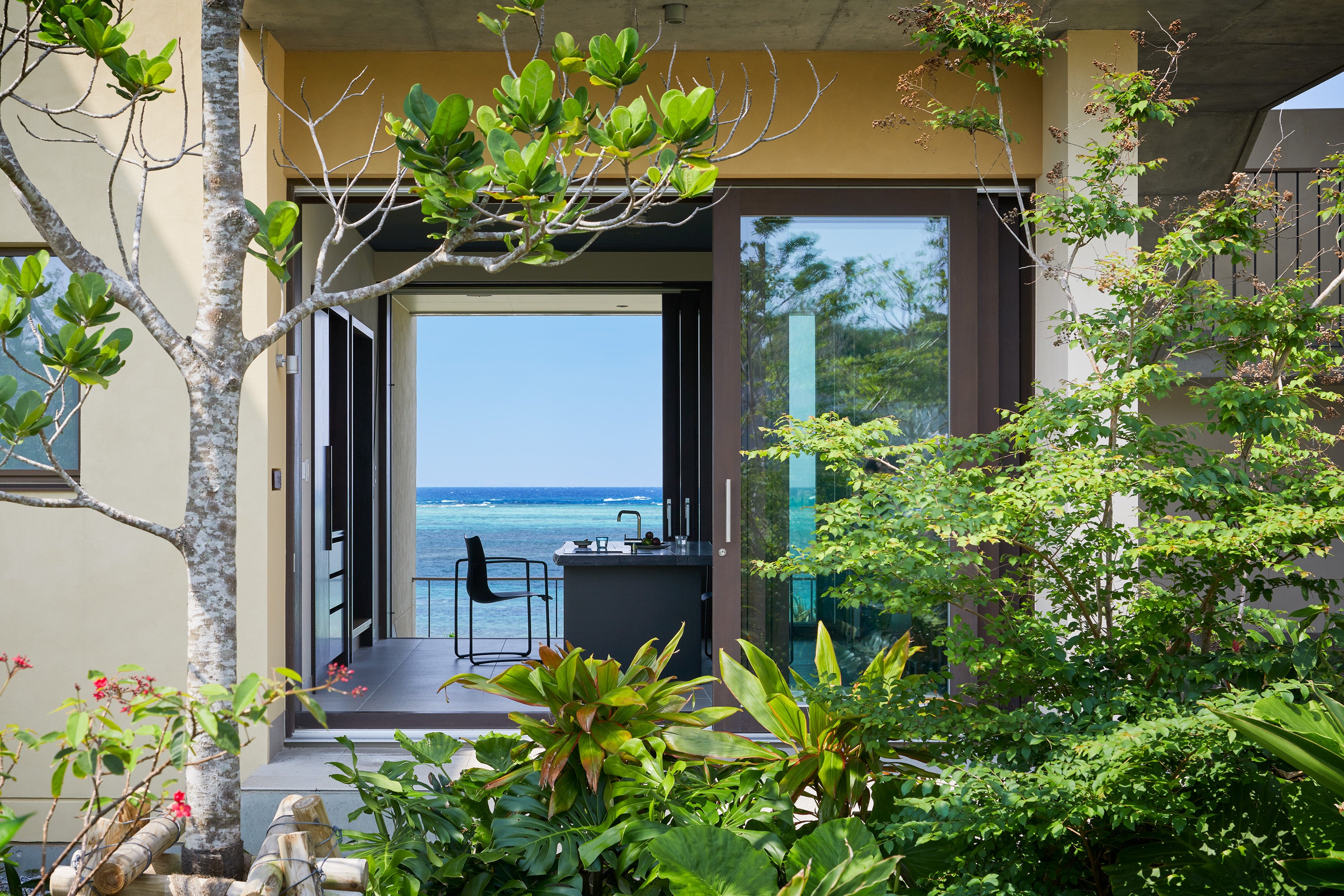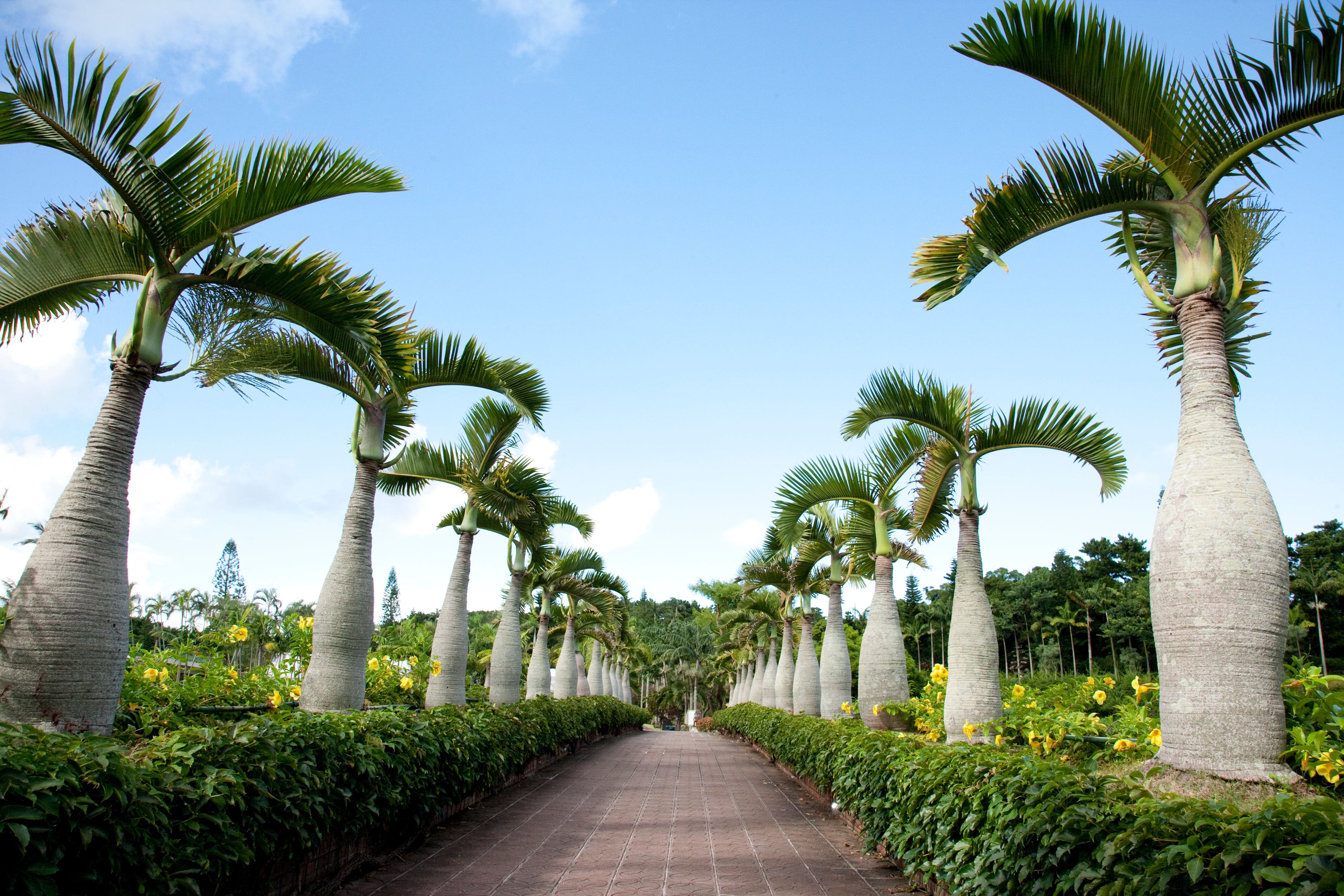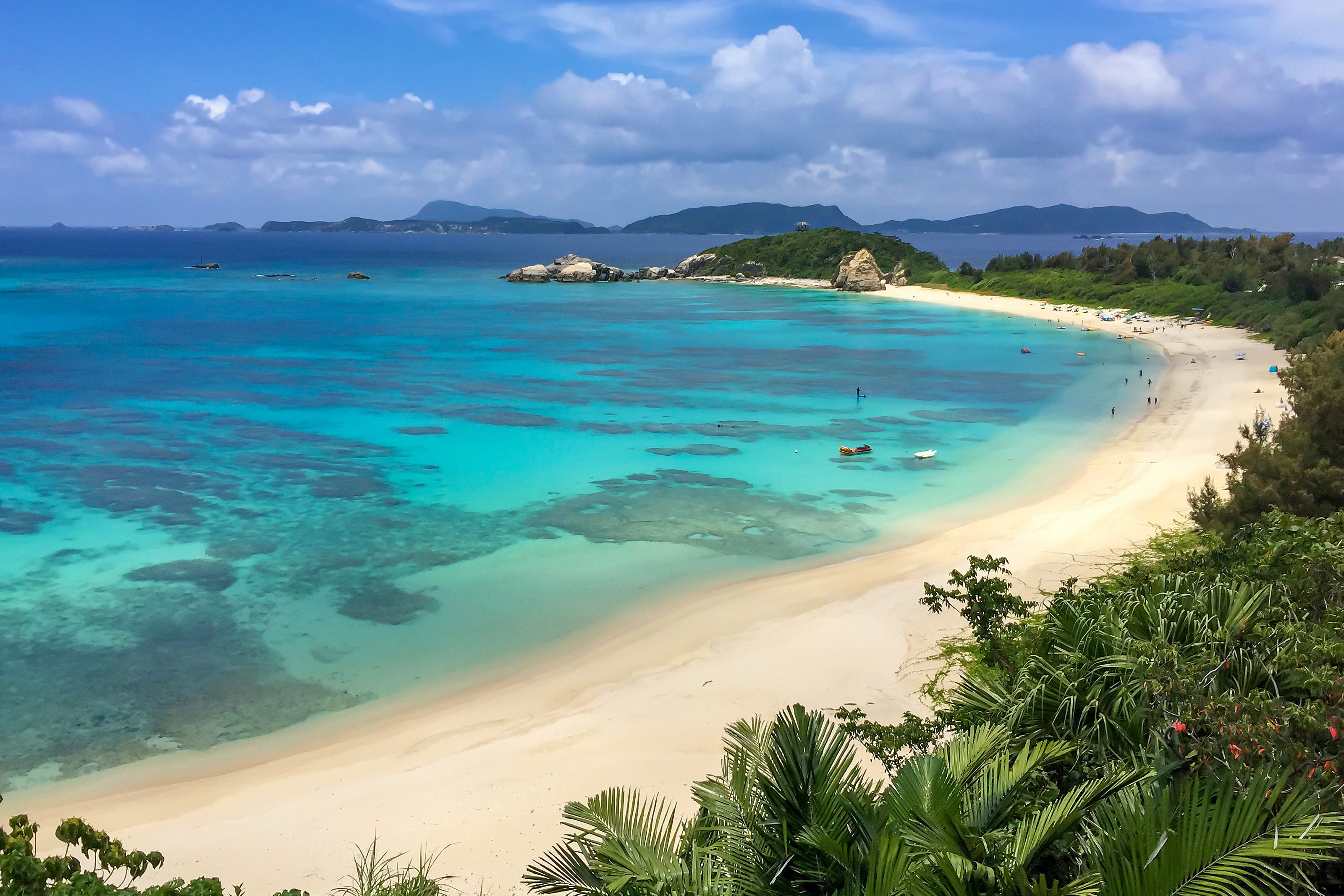
There are many good reasons to guzzle down a Japanese hotpot. One being: it’s delicious. However, fatigue from having kayaked in 32C temperatures through mangrove forests is rarely one of them.
That’s Okinawa for you. It’s Japan’s most southerly prefecture and the only one with a sub-tropical climate. This island chain, often called the Hawaii of Japan, is perhaps the only place where you can start your day, as I did, with a traditional Japanese onsen experience, continue it with a snorkel excursion among coral reefs, and end it with a steaming bowl of shabu-shabu.
The flight from Tokyo to Okinawa (both the name of the archipelago and of its main island) took about two-and-a-half hours. I’d booked both legs with Japanese airline ANA, so the transfer from my London-Tokyo flight to the domestic flight was very smooth, although you do still have to take your hold luggage through customs in Tokyo.

My plane touched down in Naha, the capital of Okinawa prefecture. The city is the gateway to the Kerama Islands and one of the best diving and snorkelling spots in Asia. While the ocean was a beautiful shade of turquoise, most of the city is a sprawling industrial port or mesh of highrise buildings. The loveliest bits of Okinawa’s main island are the beaches in the centre and the north, which is where I was headed.
I hopped on a group snorkelling tour of Kerama with snorkelling company Marine House Seasir (from ¥4,000 or £20 per adult for a half day). Within half an hour’s boat ride, we were all gasping at the clear ocean. In parts, you can see 40 or 50 metres deep and the water is a crystallised aquamarine colour so distinctive it has its own name: Kerama Blue.
The area is known for its whale sharks, manta rays, sea turtles and even breeding humpback whales (the latter can be seen from December to March). Sadly none decided to come and play while I was there but we did see plenty of clownfish and rainbow parrotfish. The pristine lagoons fringed with coral reefs could have come straight out of a travel brochure for the Maldives.
Back on dry land, I began the one-hour drive up north to Hoshinya Okinawa, my hotel. Okinawa has almost no public transport so I relied on taxis during this trip. However, as I learned, the Japanese are impeccably polite behind the wheel and drive on the same side as in the UK so next time I’d consider hiring a car.

Read more: OMO5 Tokyo Gotanda by Hoshino Resorts, Japan hotel review
Hoshinya continued the Maldivian vibe. The palatial suites come with floor-to-ceiling windows overlooking the sea for sunset snaps and access to a private beach. But there’s a deeper cultural side you don’t get in most high-end beach resorts, including a nightly performance of traditional Okinawan art. That evening I was treated to a bout of haunting singing and sanshin (a kind of ancient local banjo).
You can also row out to sea before breakfast with some local fishermen in a sabani (Okinawan wood boat) to hear about the local coral or take a lesson in karate, whose deepest origins lie right on this island.
However all this luxury doesn’t come cheap, with prices starting from ¥170,000 (£852) per night. At the other end of the scale, you can get a very comfortable double room at Ryukyu Onsen Senagajima Hotel for ¥24,000 (£120), including access to the hotel’s onsen spa and a slap-up Japanese breakfast.
But Hoshinoya’s appeal also came from its location – on the west side of the island near some of its best white sand beaches, like Nirai Beach (where you might see nesting sea turtles) and Zanpa Beach (more popular, with banana boat rides and snorkelling).
The surrounding Nakagami region is brimming with things to see and do, including the Southeast Botanical Gardens (one of the largest in Japan) and the famous artisan pottery workshops of Yomitan village.

The next day, I decided to ditch the barefoot luxury and experience Okinawa’s wilder side, with a kayak excursion through the mangrove forests (from ¥10,150 or £51 per person). Around an hour’s taxi drive north of Hoshinoya is a stunning inland sea called Haneji, where Nik Brogan, originally from south Devon, has been leading kayak tours on the island for the past seven years and, as I learned, he has an encyclopedic knowledge of the local flora and fauna.
He pointed out sea ospreys and egrets as we paddled through the mudflats of an inland sea flanked by thick walls of untamed jungle.
It was deliciously peaceful. Just the chatter of a ruddy kingfisher for a soundtrack, and so far from the frenetic pace and sensory overload you imagine when you think of Tokyo or other parts of mainland Japan.
But that’s because Okinawa is not really Japan. Not historically at least. For 450 years it was a separate kingdom called Ryukyu, with its own language, cuisine and crafts. Once the Japanese empire formally took over in the 1870s, the local language and culture were suppressed.
Read more: Why you should experience Japan’s busiest city by bike

Less than 100 years later, the islands were severely impacted by the Second World War. The Battle of Okinawa is regarded as one of the bloodiest Pacific skirmishes of the conflict, leaving the island little more than ashes and subsequently under US military control for 27 years.
This difficult history gave Okinawa cultural legacies you won’t find anywhere else in Japan. All around the island, there are restaurants serving dishes like taco rice (a Tex-Mex-Japanese fusion invented locally to cater to American soldiers’ palates) and onigiri (rice balls) stuffed with Spam.
“Spam has become a staple on Okinawa since the US military gave it out to starving families after the war,” Junko Yokoo of Japan Guide Junko, a local tour company, explained.
The traditional Ryukyu cuisine is also being revived. The pork that I had piled into my shabu-shabu post-kayaking was a local speciality, agu, famous for its sweet marbled fat. The pig breed almost went extinct during the war but is now being rehabilitated.
“We feel different from people on the mainland,” Keito Shimabukuro from the Okinawa tourist board told me. “We are more relaxed. Over there, everyone is so busy rushing around.”
Read more: What it’s like to hike Japan’s sacred Kumano Kodo trail
Most people I spoke to couldn’t believe Okinawa was the first place I’d ever visited in Japan. But I still got everything I wanted from a trip to the country: superb food presented as artistic masterpieces, uber-clean accommodation (and those famous Toto toilets), flawlessly polite service, and plenty of enriching history and culture. Plus the added bonus of getting to gaze at some of the world's most beautiful beaches as I kayaked, snorkelled and swam.
With all that calorie burning, you're going to need to throw some more of that delicious agu pork belly in your shabu-shabu.
Marianna Hunt was a guest of ANA (All Nippon Airways), Okinawa Prefecture (visitokinawajapan.com) and Hoshinoya Okinawa.
How to get there
Return flights from London Heathrow to Okinawa (with a change in Tokyo) start from £939.
Where to stay
Push the boat out at Hoshinoya Okinawa or keep costs lower with a stay at Ryukyu Onsen Senagajima Hotel.
Read more: The Nautilus, Maldives hotel review
The little-visited region that could be the answer to Japan’s overtourism problem
The Palace Hotel, Tokyo review
OMO5 Tokyo Gotanda by Hoshino Resorts, Japan hotel review
The best Japanese destination swaps
Could these be the filming locations in France for The White Lotus season 4
This new Costa Rica hotel sits in the most remote part of the country
Why Hiroshima is suddenly the go-to Japanese city and will change your world view







